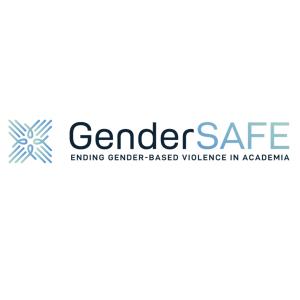 \
&
Contact us
\
&
Contact us
 \
&
Contact us
\
&
Contact us
Published on | 7 months ago
Last updated on | 7 months ago

manhei.to@fwo.be
Horizon Europe encourages and stimulates cooperation with non-EU countries and this is also one of the key instruments to implement Europe’s strategy for international cooperation: the global approach to research and innovation.
Most Horizon Europe calls are open to participants from non-EU countries, also called Third Countries. However in some calls participation from non-EU countries can be limited in order to safeguard the EU’s strategic assets, interests, autonomy or security. Limitations or conditions may also be applicable to the participation of legal entities established in an eligible country but which are controlled directly or indirectly by an ineligible country [Horizon Europe regulation article 22(5)].
If you are involving a partner from a non-EU country in your consortium , check the status of this country in Horizon Europe at the moment of submission. You can consult the Country Eligibility Tool on the NCP Flanders website, and also verify the status of the country in the Horizon Europe Programme Guide.
In some call topics, participation from non-EU Countries is also explicitly required or excluded. So always read the call text carefully.
In this infosheet you will find an overview of all the types of countries for Horizon Europe participation and its eligibility.
For an overview per country, check our Country Eligibility Overview tool.
Legal entities in Member States can participate and receive funding in all parts of Horizon Europe. However in some call topics, limitations or conditions may also be attached to those entities which are controlled directly or indirectly by entities from ineligible countries (Third Country) [Article 22.5 of the Horizon Europe Regulation].
In general, legal entities in Member States can coordinate projects in all calls with the exception of calls under the widening and spreading excellence part of Horizon Europe. In these calls only the so called widening countries and outermost regions of Member States can coordinate projects.
Overseas countries and territories are linked to one of the European Member States and are therefore eligible to receive funding from Horizon Europe. Participants from overseas territories can participate in all parts of Horizon Europe on the same terms as entities from the EU Member States.
Association to Horizon Europe is the closest form of international cooperation in Horizon Europe. Entities of Associated Countries can participate in the Horizon Europe calls under the same conditions as entities from the EU Member States and are therefore eligible for funding, unless specific limitations or conditions are laid down in the work programme and/or call topic.
Not only EU neighbouring countries can apply for association, any country in the world with a strong research and innovation capacity that share common values with Europe can apply for association to Horizon Europe.
There are 4 categories of countries eligible for association with Horizon Europe:
Close to the start of the Association, transitional measures can be set in place, through which entities of these countries can already be included as beneficiaries in call topics. Details are mentioned in the Horizon Europe Programme Guide.
Most Horizon Europe calls are open to participants from non-EU countries, also called Third Countries. Funding is only automatically available if they are associated or if they appear in the list of Low and Middle Income Countries as listed in the Horizon Europe Programme Guide.
Specific third countries can also be excluded from participation to the programme or to a part of the programme and/or to specific call topics mainly in order to safeguard the EU’s strategic assets, interests, autonomy or security.
Most Horizon Europe calls are open to participants from non-EU countries, also called Third Countries. If they are not automatically eligible for funding, they can still get funding in certain circumstances.
If a third country is allowed to participate but is not eligible for Horizon funding, then the organisations can still participate with own funding, and be included in the project as Associated partners.
Specific third countries can also be excluded from participation to the programme or to a part of the programme and/or to specific call topics mainly in order to safeguard the EU’s strategic assets, interests, autonomy or security. This will always be explicitly mentioned in the call text.
A third country can participate as an associated partner with own funding. Associated partners have the following characteristics:
Third countries can get exceptionally funding if:
Be aware that some third countries have created co-funding mechanisms which provide funding for the participants from their country in a successful submitted Horizon Europe proposal. In this document you will find an overview of the complementary funding of some third countries. Entities of these countries participate as Associated Partners with own funding.
We offer news and event updates, covering all domains and topics of Horizon Europe, Digital Europe & EDF (and occasionally, for ongoing projects, Horizon 2020).
Stay informed about what matters to you.
By signing up, you can opt in for e-mail notifications and get access to
a personalised dashboard that groups all news updates and event announcements in your domain(s).
Only for stakeholders located in Flanders

GenderSAFE, funded by Horizon Europe under call topic HORIZON-WIDERA-2023-ERA-01-09, is a project that advances efforts to implement a zero-tolerance approach to gender-based violence in higher education and research in the European Research Area. This overall objective will be achieved through a five-fold strategy. The project exists of a European-wide consortium of six partners. Read more about the GenderSAFE’s five-fold strategy, the role of the Belgian partner Yellow Window and the latest outputs of the project in this testimonial.